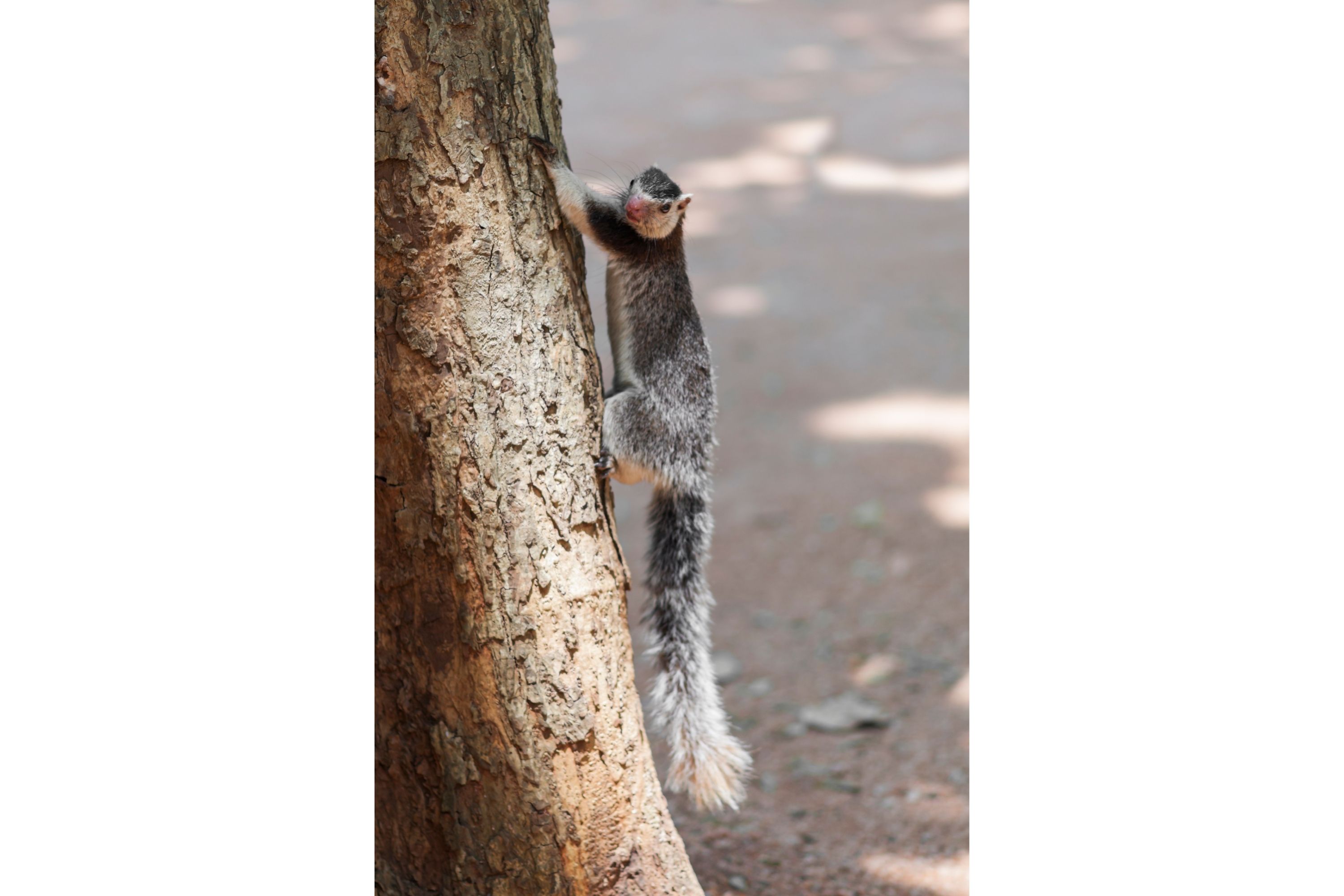Indian giant squirrel
(Ratufa indica)

Description
The Indian giant squirrel or Malabar giant squirrel (Ratufa indica) is a large multi-coloured tree squirrel species endemic to forests and woodlands in India. It is a diurnal, arboreal, and mainly herbivorous squirrel. The Indian giant squirrel is one of the largest squirrels with a head–and–body length of 25–50 cm (10 in – 1 ft 8 in), a tail that is about the same or somewhat longer, and a weight of 1.5–2 kg (3.3–4.4 lb), although rarely up to 3 kg (6.6 lb). Average for both sexes is about 36 cm (1 ft 2 in) in head–and–body length, 45 cm (1 ft 6 in) in tail length and 1.7–1.8 kg (3.7–4.0 lb) in weight. It has a conspicuous one-, two- or three-toned colour scheme. The colours involved can be whitish, creamy-beige, buff, tan, rust, reddish-maroon, brown, a dark seal brown or black. The underparts and the front legs are usually cream coloured, the head can be brown or beige, however there is a distinctive white spot between the ears.Otherwise the colours depend on the subspecies. This species is endemic to India, with main sections of its distribution in the Western Ghats, Eastern Ghats and Satpura Range as far north as Madhya Pradesh (approximately 22° N). It is found at altitudes of 180–2,300 m (590–7,550 ft) in tropical deciduous, semi-deciduous (where often utilizing denser riparian growth), and moist evergreen forests and woodlands. In general, its distribution is fragmented because it is intolerant of habitat degradation.The Indian giant squirrel generally nests in taller trees with a mean height of 11 m (36 ft) (±3 m (10 ft) SD) in order to avoid predators The Indian giant squirrel is an upper-canopy dwelling species, which rarely leaves the trees, and requires "tall profusely branched trees for the construction of nests." It travels from tree to tree with jumps of up to 6 m (20 ft). When in danger, the Ratufa indica often freezes or flattens itself against the tree trunk, instead of fleeing. Its main predators are the birds of prey like owls and the leopard. The Giant Squirrel is mostly active in the early hours of the morning and in the evening, resting in the midday. They are typically solitary animals that only come together for breeding. The species is believed to play a substantial role in shaping the ecosystem of its habitat by engaging in seed dispersal.Diet includes fruit, flowers, nuts and tree bark. Some subspecies are omnivorous, also eating insects and bird eggs
Taxonomic tree:







